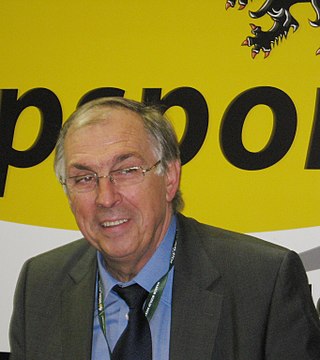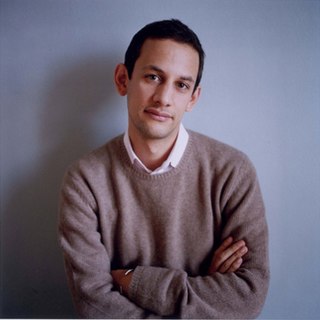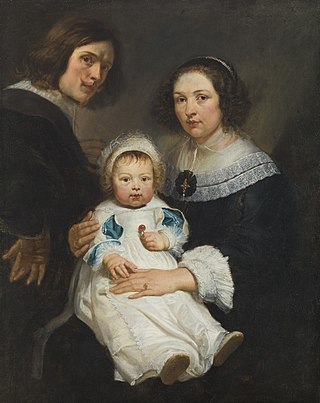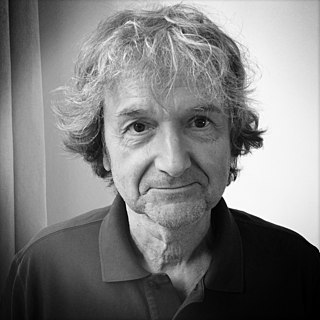
Édouard Louis Joseph, Baron Merckx, is a Belgian former professional road and track cyclist racer who is the most successful rider in the history of competitive cycling. His victories include an unequalled eleven Grand Tours, all five Monuments, setting the hour record, three World Championships, every major one-day race other than Paris–Tours, and extensive victories on the track.

Luc Tuymans is a Belgian visual artist best known for his paintings which explore people's relationship with history and confront their ability to ignore it. World War II is a recurring theme in his work. He is a key figure of the generation of European figurative painters who gained renown at a time when many believed the medium had lost its relevance due to the new digital age.

Jan Yoors was a Belgian-American artist, photographer, painter, sculptor, writer, filmmaker, and tapestry creator. Growing up in Antwerp to liberal, pacifist parents, his father Eugeen Yoors, a famed stained-glass artist, Yoors studied painting before deciding to live with a Rom kumpania he encountered on the outskirts of Antwerp at the age of twelve, and about which he would later write two memoirs, The Gypsies (1967) and Crossing: A Journal of Survival and Resistance in World War II (1971), the latter about living with the Rom during World War II. Yoors fled to London after the war where he lived with his wife Annebert and her best friend Marianne. It is at this point that Yoors began to design tapestries and set up a tapestry studio with his wife Annebert and Marianne. In 1950 he moved to New York, traveling there under the guise of a journalist. The following year, Annebert and Marianne joined and the three set up the Jan Yoors Studio. In New York, Yoors befriended numerous figures in the art and design worlds. He received commissions from corporations such as Bank of America, and J.P. Morgan, and private collectors. His work was seen in numerous exhibitions across the United States and internationally. In New York in the 50s, Yoors also continued his passion for photography, which he began while living with the Rom, documenting the streets of New York. He traveled extensively on a trip to revisit his Rom family in Europe, and, in 1966–67 photographed post-war religious buildings for Edward Sovik as part of the First International Congress on Religion, Architecture, and the Visual Arts in New York. Yoors's oeuvre is currently represented by several galleries in New York, Europe including reGeneration Furniture, Todd Merrill, L Parker Stephenson Photographs, and Fifty One Fine Art Photography, Antwerp, and regularly shown at design and photography fairs.

Pieter Lastman (1583–1633) was a Dutch painter. Lastman is considered important because of his work as a painter of history pieces and because his pupils included Rembrandt and Jan Lievens. In his paintings Lastman paid careful attention to the faces, hands and feet.

Patrick Sercu was a Belgian cyclist who was active on the road and track between 1961 and 1983. On track, he won the gold medal in the 1 km time trial at the 1964 Summer Olympics, as well as three world titles in the sprint in 1963, 1967 and 1969. On the road, he earned the green jersey in the 1974 Tour de France. Sercu is the record holder for the number of six-day track race victories, having won 88 events out of 223 starts between 1961 and 1983; several of these wins were with cycling great Eddy Merckx. He also won six stages at the Tour de France and eleven stages at the Giro d'Italia.

Jan Provoost, or Jean Provost, or Jan Provost was a Belgian painter born in Mons.

Antony Scherman was a Canadian painter. He was known for his use of encaustic and portraiture to depict events of historical, cultural and popular significance.

Jens Hoffmann Mesén is a writer, editor, educator, and exhibition maker. His work has attempted to expand the definition and context of exhibition making. From 2003 to 2007 Hoffmann was director of exhibitions at the Institute of Contemporary Arts London. He is the former director of the CCA Wattis Institute for Contemporary Art from 2007 to 2016 and deputy director for exhibitions and programs at The Jewish Museum from 2012 to 2017, a role from which he was terminated following an investigation into sexual harassment allegations brought forth by staff members. Hoffmann has held several teaching positions including California College of the Arts, the Nuova Accademia di Belle Arti and Goldsmiths, University of London, as well as others.

Michaël Borremans is a Belgian painter and filmmaker who lives and works in Ghent. His painting technique draws on 18th-century art, as well as the works of Édouard Manet and Degas. The artist also cites the Spanish court painter Diego Velázquez as an important influence. In recent years, he has been using photographs he has made himself or made-to-order sculptures as the basis for his paintings.
Mark Manders is a Dutch artist, currently living and working in Ronse, Belgium. His work consists mainly of installations, drawings and sculptures. He is probably best known for his large bronze figures that look like rough-hewn, wet or peeling clay. Typical of his work is also the arrangement of random objects, such as tables, chairs, light bulbs, blankets and dead animals.

Erasmus Quellinus the Younger or Erasmus Quellinus II was a Flemish painter, engraver, draughtsman and tapestry designer who worked in various genres including history, portrait, allegorical, battle and animal paintings. He was a pupil of Peter Paul Rubens and one of the closest collaborators of Rubens in the 1630s. Following Rubens' death in 1640 he became one of the most successful painters in Flanders. He was a prolific draughtsman who made designs for decorative programmes in the context of official celebrations, for publications by the local publishers and for tapestries and sculptures realised by the local workshops. His work reveals the Classicist trend in the Baroque.

Nicolas François Octave Tassaert was a French painter of portraits and genre, religious, historical and allegorical paintings, as well as a lithographer and engraver. His genre pieces evoked the miserable life of the downtrodden in Paris and included a number of scenes of suicide. He further created sensuous images of women and erotic scenes. He was later in life active as a writer and poet. He was the grandson of the Flemish sculptor Jean-Pierre-Antoine Tassaert.

Oda Jaune is a Bulgarian painter.
Danny Matthys is a Flemish - Belgian visual artist, which was originally known as conceptual artist of international reputation. In the beginning of his career in the 1960s, he was a pioneer in Polaroid art and Video art.
Glasstress is a recurring exhibition that brings together art by contemporary artists made with glass. Launched in 2009 as a collateral exhibition of the Venice Biennale of Arts by Adriano Berengo as a way of showcasing the works produced by Berengo Studio, it has since had editions take place in 2011, 2013, 2015, 2017, 2019, 2021 and 2022.
Koen van den Broek is a Belgian artist who lives and works in Antwerp and Seoul, South Korea.

The Men's Individual Road Race of the 1974 UCI Road World Championships cycling event took place on August 25 in Montreal, Quebec, Canada. The route consisted of twenty-one laps around a circuit that contained two climbs within it, totaling to a length of 262.5 km (163.1 mi). Belgian Eddy Merckx won the race, while French riders Raymond Poulidor and Mariano Martínez finished second and third, respectively. This was Merckx's third victory in the men's road race at the UCI Road World Championships, equaling the record. In addition, he also completed the Triple Crown of Cycling, which consists of winning two Grand Tour races and the men's road race at the UCI Road World Championships in a calendar year.

Jan Vanriet, real name Jan Louis Lucien Vanriet, is a Belgian (Flemish) painter and poet.
Jan Van der Stock is a Belgian art historian and exhibition curator. He is a full professor at the University of Leuven, where he lectures on Medieval and Renaissance Arts, Graphic Arts, Iconography, Iconology, and Curatorship. He is the director of Illuminare – Centre for the Study of Medieval Art and holder of the Van der Weyden Chair – Paul & Dora Janssen, the Veronique Vandekerchove Chair of the City of Leuven and the Chair of Medieval Sculpture in the Low Countries. Jan Van der Stock was the husband of Prof. dr. Christiane Timmerman and is the father of Willem and Liza Van der Stock.
















